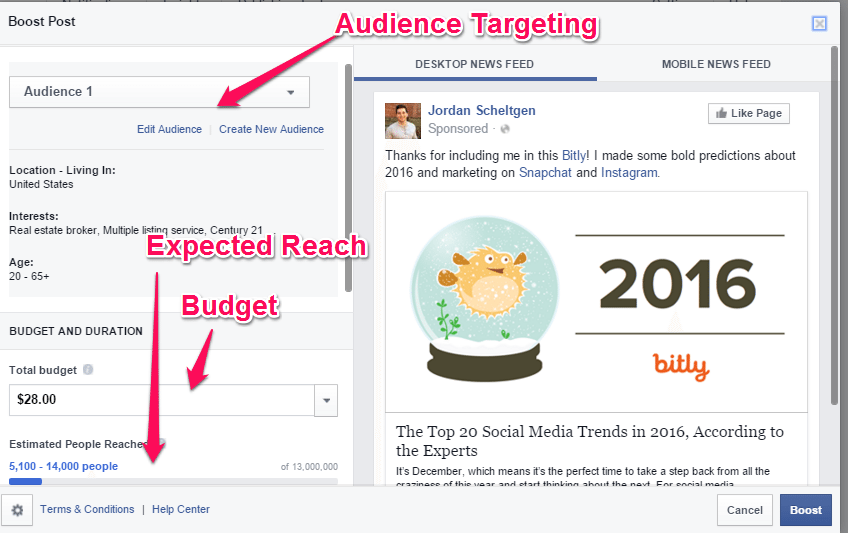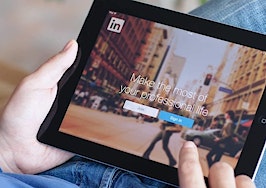- Be a business person, not just a salesperson.
- As your marketing targets divide their attention among several online platforms, you have to be in multiple places at once.
- Set goals at different intervals depending on how soon you can reasonably expect to see results.
Not planning is planning to fail. It’s that simple.
So for 2016, it’s crucial that real estate agents and brokerages have a marketing plan. In this article, I’ll go over seven must-haves when it comes to real estate marketing and promoting your business. Although there are many other things out there, these items are based on my personal experience working with both agents and large brokerages in developing marketing plans.
1. Set a budget
Before you do anything else, do this. Some agents freestyle it when it comes to marketing budgets — that’s not going to cut it. Others aren’t ready to treat their profession as a business and hoard commissions for personal expenses instead of reinvesting. People who do this are salespeople — not business people.
If you’re making a ton of commissions and living the life you want, this article isn’t for you.
Stop reading.
However, if you want to grow your business, I’ll do my best to help you out in the next 400 to 500 words.
When setting a budget, start by taking your combined earnings from last year. Let’s say you made the median income for an agent in 2015, which was $43,860. Allot 15 percent of that toward marketing in 2016.
That’s $6,579 annually or $548 a month. Once you’ve set this number, you can figure out how much of your monthly budget to spend on marketing initiatives.
2. Define your ideal customer
Every agent has a target demographic. It might be 20-somethings buying apartments, new families looking for bungalows or luxury buyers seeking vacation homes. Whatever it is, define it.
When you define your ideal customers, it becomes easier to make a marketing plan crafted toward them and close more sales from that demographic. Millennials need to be marketed to differently than Gen X, Gen Y, etc.
3. Adopt a mobile strategy
Statistically speaking, at least 11.3 percent of people reading this are reading this from their phone. According to ComScore, mobile-only Internet users account for 11.3 percent of all Internet traffic.
Desktop-only users account for 10.6 percent of Internet traffic. So that means that just under 80 percent of all Internet users are on both their desktop and mobile phones.
This really shouldn’t come as a surprise. Writing on mobile demographics and tactics dominated much of 2014/2015.
So where should you start?
I’d say with Instagram. Justin Kerby wrote a post on how to build your Instagram network, which has some great tips for anyone on the platform.
4. Develop a cross-platform social media plan
Only having Facebook or Twitter won’t be enough in 2016. As your customers duck and weave across platforms, you have to do so with them. Continuing the conversation across platforms is the key to building an effective brand.
For instance, people who follow my Facebook page engage with me there, but they might read my blog posts on LinkedIn. I don’t want to miss opportunities to connect with people, no matter the platform.
5. Get a little boost from paid social
Relying on organic reach alone won’t be enough on social media. If you are sharing blog posts or important updates, make sure to boost them on Facebook. If you don’t know how to boost a post, here’s how:
I’d blend your spending on social between boosting posts and building your following by standard Facebook or Twitter ads.
6. Set goals
I make marketing plans around a single-metric focus, such as sales or users acquired. Then from there, any marketing initiative we do, I can look and say, “Will this help us increase sales?” And if the answer is no, then we won’t do it.
It’s the reason I contribute to Inman and not a nature blog. I contribute to Inman to demonstrate expertise, give value to the community and prompt decision-makers at brokerages to reach out to us at Cave Social.
I want to bring on one mid-sized client from Inman every six to eight months. The majority of posts we put out don’t lead to immediate conversions, but we’re buying into the long game with content, thus our goals are reflected in this way.
Agents need to take the same approach with their marketing efforts.
Set goals for Facebook weekly reach, website traffic, Twitter engagements per month, etc. Setting goals around your marketing efforts can help you manage expectations while simultaneously giving you something to strive for with every tweet, Facebook update or blog post.
7. Define how you will measure success
I was speaking with an agent in early December who had just signed up for a third-party lead generation service that cost her about $50 a month.
She asked me, “Is it worth it?”
Before I explain my answer, I want to make clear I don’t believe in third-party lead generation. Real leads come from real connections with people.
Nevertheless, I told her, “It depends. If this brings you one sale over the next year, then of course it’s worth it. Heck, it’s worth it if it brings in one sale every 24 months (roughly $1,200 cost to the agent). The key is to set up a system to quickly vet the leads, so you don’t spend countless hours chasing duds.”
For all of your channels, define what would make a successful first quarter and then re-evaluate after three months.
Good luck with creating your marketing plan.
Jordan Scheltgen is the founder of Cave Social. You can follow him on Twitter @cavejordans or connect with him on Facebook.










